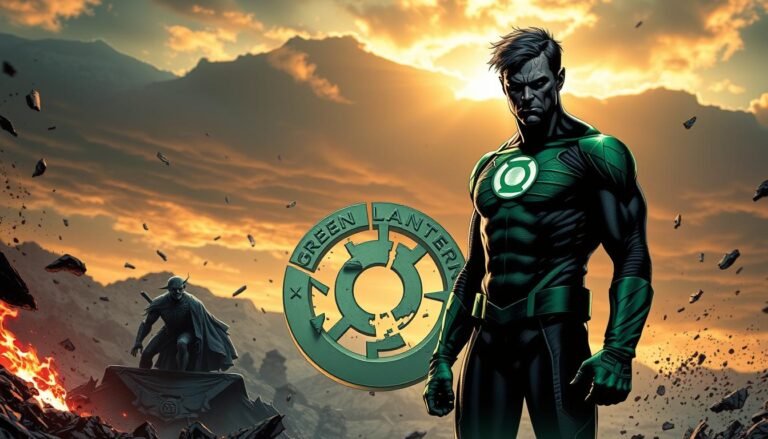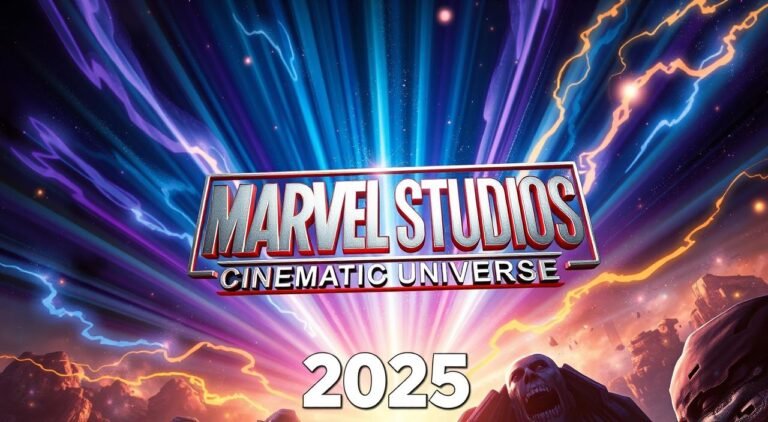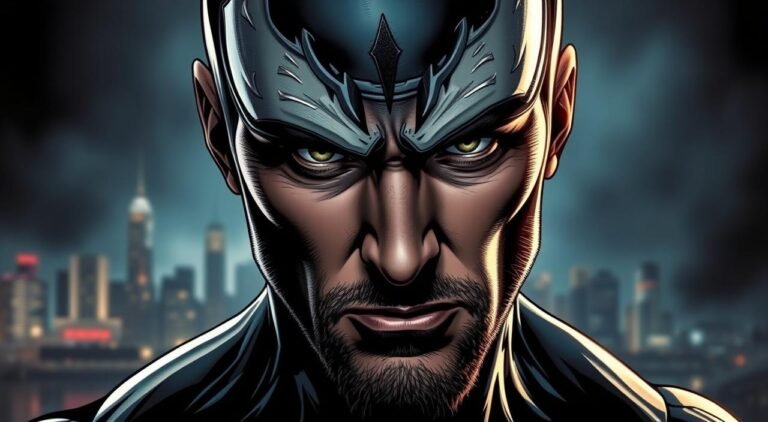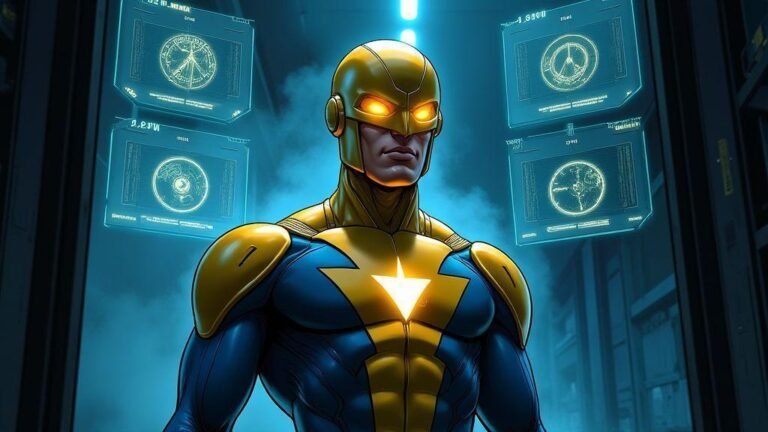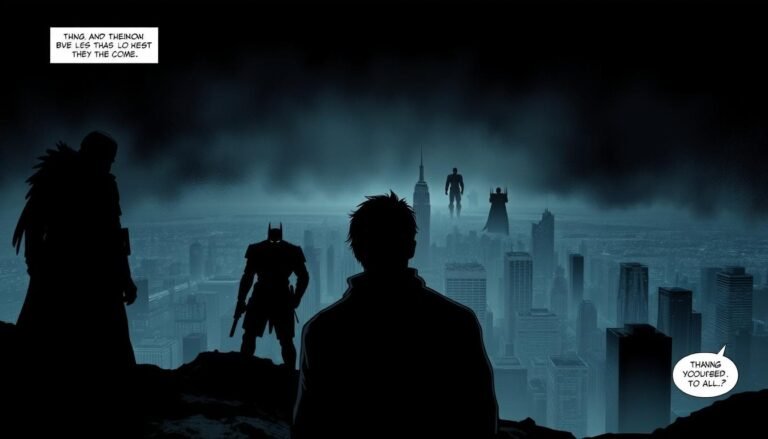X-Men: Days of Future Past (1981) – Early Insights and Plot Details
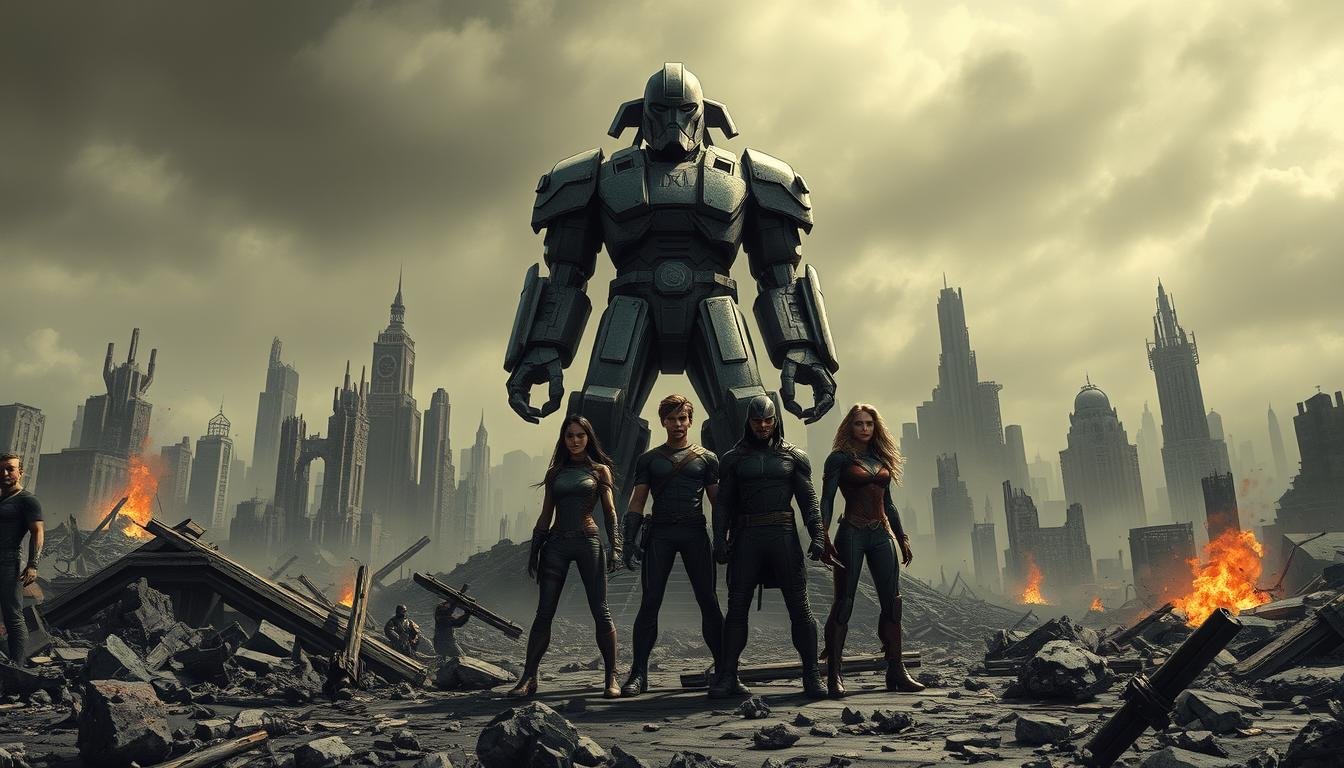
Welcome to my comic book blog, where we dive into legendary storylines that have shaped the world of Marvel Comics.
Today, we’re exploring one of the most iconic narratives in the Uncanny X-Men series—a tale that has left an indelible mark on both comics and pop culture.
Originally published in 1981, this groundbreaking storyline introduced themes of time travel and dystopian futures, setting a new standard for superhero storytelling.
Crafted by the brilliant team of Chris Claremont, John Byrne, and Terry Austin, it remains a cornerstone of the comic book world.
While many know this story from its film adaptation, the original comic offers a deeper, more nuanced experience. Its influence extends even to other legendary works like Kingdom Come, enriching the broader narrative legacy of the genre.
In the sections ahead, we’ll uncover the early insights and plot details that make this story a timeless classic. Stay tuned for a journey through its creative origins and lasting impact.
Product Description
The ultimate X-Men ensemble fights a war for the survival of the species across two time periods in X-MEN: DAYS OF FUTURE PAST. The beloved characters from the original “X-Men” film trilogy join forces with their younger selves from “X-Men: First Class,” in an epic battle that must change the past — to save our future.
Introduction
Few narratives have left as profound a mark on comic book history as this one. When I first read it, I was struck by how it seamlessly blended time-travel with the struggles of mutantkind.
It’s a story that not only entertained but also challenged readers to think about the future in a whole new way.
What makes this tale so iconic is its ability to weave together complex themes. The idea of altering the past to save the future was groundbreaking.
It added a layer of depth to the mutant narrative, making it more than just a superhero comic. This was a turning point in how writers approached storytelling in the genre.

The early ’80s were a transformative period for comics, and this story was at the forefront. It introduced readers to a dystopian future where mutantkind faced extinction.
The stakes were high, and the emotional weight of the characters’ struggles resonated deeply.
As we dive into this exploration, I’ll guide you through the key elements that make this story a masterpiece. From its creative origins to its lasting impact, we’ll uncover why it remains a cornerstone of comic book history.
| Key Themes | Impact |
|---|---|
| Time Travel | Revolutionized storytelling |
| Mutant Struggles | Added emotional depth |
| Dystopian Future | Set a new standard for genre |
Creator and Origin Stories
Behind every great comic lies a team of brilliant minds, and this story is no exception. The collaboration between Chris Claremont and John Byrne brought this iconic storyline to life.
Their partnership was a perfect blend of Claremont’s intricate storytelling and Byrne’s dynamic artistry.

The inspiration for this tale came from classical science-fiction. Claremont has often cited shows like Doctor Who as a major influence.
The idea of time travel and alternate realities resonated deeply with him, and he saw an opportunity to bring these themes into the world of mutants.
The Visionary Creators Behind the Story
Claremont and Byrne’s partnership was legendary. Claremont’s ability to craft complex characters and Byrne’s knack for visual storytelling made them a powerhouse duo. Together, they pushed the boundaries of what a comic book could achieve.
One of the standout elements was the development of Charles Xavier. His role as the moral compass of the mutant world was pivotal. Claremont and Byrne worked tirelessly to ensure his character embodied both wisdom and vulnerability.
Development and Early Inspiration
The creative journey behind this storyline was anything but ordinary. Claremont and Byrne spent countless hours brainstorming, sketching, and refining their ideas. They wanted to create a narrative that would leave a lasting impact.
Their efforts paid off. The day this comic hit the stands, it changed the game. It introduced readers to a dystopian future where mutants faced extinction, and the stakes were higher than ever. This bold approach set a new standard for the genre.
| Key Creators | Contributions |
|---|---|
| Chris Claremont | Intricate storytelling and character development |
| John Byrne | Dynamic artistry and visual storytelling |
| Charles Xavier | Pivotal role as the moral center |
For fans of Marvel Comics, this storyline remains a cornerstone. If you enjoyed this deep dive into its origins, you’ll love exploring The Dark Phoenix Saga, another masterpiece by Claremont and Byrne.
X-Men: Days of Future Past (1981): A Comic Book Milestone
When I think about groundbreaking comic book narratives, this one stands out for its bold storytelling. It introduced a timeline mechanic that was both innovative and thought-provoking. The idea of altering the past to save the future was revolutionary, setting a new standard for the genre.
One of the most compelling aspects of this story is its exploration of Earth-811, an alternate future where mutants face extinction. This dystopian vision wasn’t just a backdrop; it was a central theme that added emotional depth to the narrative. The stakes were high, and the tension between hope and despair was palpable.
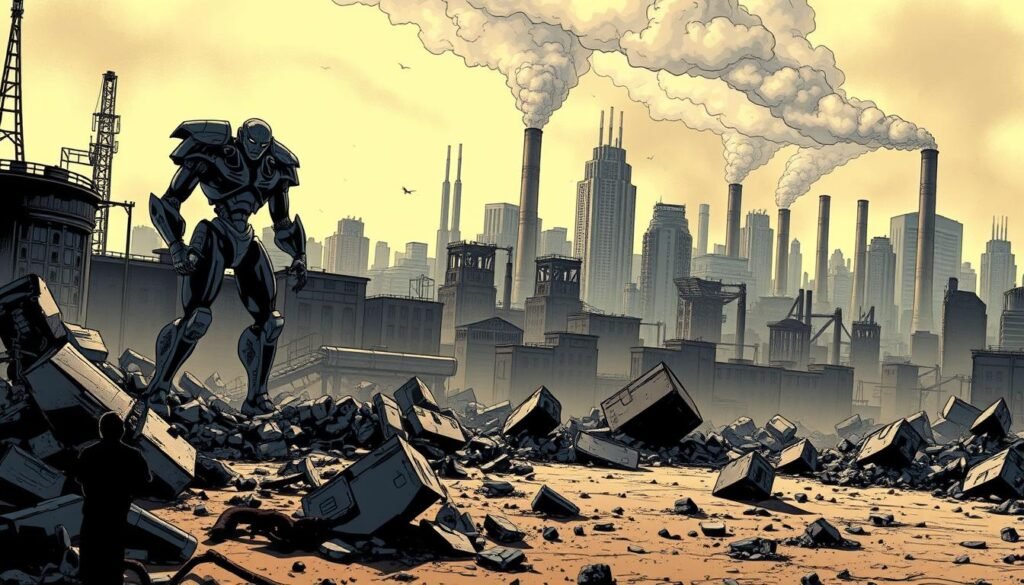
The juxtaposition of the present and the future past created a unique narrative structure. It allowed readers to see the consequences of actions in real-time, making the story more immersive. This approach reshaped how we think about mutants and their struggles, adding layers of complexity to the narrative.
Here’s why this storyline is considered a milestone:
- It introduced the concept of alternate timelines, influencing countless stories in comics and other media.
- The dystopian future of Earth-811 became a blueprint for apocalyptic narratives.
- It set new standards for complex, time-bending storylines, inspiring adaptations in films and TV shows.
This comic didn’t just entertain; it challenged readers to think about the future in a whole new way. Its impact on the comic book world is undeniable, and its legacy continues to inspire creators today.
roduct Description
The X-Men must travel in time to change a major historical event that could globally impact on man and mutant kind. Sequel to the 2011 film ‘X-Men: First Class’.
First Appearance and Publication History
The publication of Issues #141 and #142 marked a turning point in comic book history. These issues introduced readers to a gripping narrative that blended time travel, political intrigue, and the struggles of mutants. The storyline’s impact was immediate, setting a new standard for the genre.
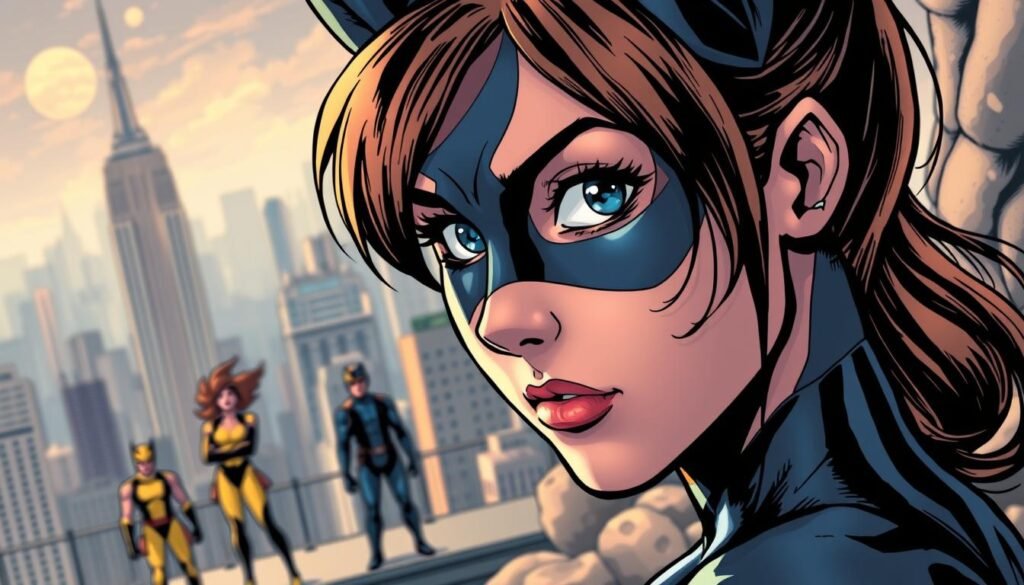
Breakdown of Issues #141-142
In Issue #141, readers were introduced to a dystopian future where mutants faced extinction. The narrative centered around an assassination that triggered widespread mutant hysteria.
This event was tied to political figures like Senator Kelly, adding a layer of realism to the story.
Issue #142 saw the debut of Kitty Pryde, a young mutant who would later evolve into Kate Pryde. Her introduction was pivotal, as she became a key figure in the X-Men universe.
These issues also explored the consequences of altering the past to save the future, a theme that resonated deeply with readers.
Impact on the Comics World
The release of these issues cemented the storyline’s reputation among comic book fans. It introduced complex themes and characters that would influence future narratives.
The dystopian future of Earth-811 became a blueprint for apocalyptic stories in comics and beyond.
Here’s a quick look at the key milestones:
| Issue | Key Event |
|---|---|
| #141 | Assassination triggers mutant hysteria |
| #142 | Debut of Kitty Pryde |
| Both Issues | Introduction of dystopian future Earth-811 |
The legacy of these issues continues to inspire creators today, proving that great storytelling transcends time.
Characters and Teams in Focus
The characters in this storyline are as diverse as their abilities, making it a standout in comic history. Each hero and villain brings something unique to the table, enriching the narrative with their distinct traits and powers. Let’s dive into the roster that made this event unforgettable.
Key Heroes and Mutants
At the heart of the story are the heroes, each with their own ability that sets them apart. Wolverine, with his healing factor and adamantium claws, is a force to be reckoned with.
His resilience and combat skills make him a key player in the fight against the Sentinels.
Storm’s control over weather patterns adds a dynamic element to the team. Her powers are not just visually stunning but also strategically crucial in battles.
Then there’s Professor X, whose telepathic ability serves as the moral and strategic backbone of the group.
The visual representation of these characters by artist Terry Austin is nothing short of iconic. His attention to detail brings their powers and personalities to life, making them unforgettable.
Villains and Supporting Cast
On the other side, the Brotherhood of Evil Mutants brings a level of tension that keeps readers on edge. Their diverse abilities and ruthless tactics make them formidable opponents.
Characters like Mystique, with her shape-shifting skills, add layers of complexity to the conflict.
The interplay of superpowers between heroes and villains is a highlight of the story. Each event is a showcase of strategy, strength, and the unique body of powers each character possesses. This dynamic keeps the narrative engaging and unpredictable.
Every character, from the heroes to the antagonists, contributes vital elements to the story’s emotional and action-packed narrative. Their interactions and conflicts drive the plot forward, making this storyline a true masterpiece.
Story Synopsis and Key Plot Details
The storyline we’re diving into today is a masterclass in blending high stakes with emotional depth. It’s a tale where the fate of mutantkind hangs in the balance, and every decision carries monumental consequences. Let’s break down the key elements that make this narrative unforgettable.
Plot Overview and Time Travel Dynamics
At the heart of this story is a daring mission to alter the past and save the future. The narrative begins in a grim dystopian world where evil mutants and humans alike are oppressed by the Sentinels.
These robotic enforcers have turned the world into a nightmare, with mutant internment camps and widespread fear.
The key to changing this future lies in time travel. Kitty Pryde, a young mutant, plays a pivotal role as her consciousness is sent back to the past. Her mission?
Prevent the assassination of Senator Robert Kelly, an event that triggers anti-mutant hysteria. The mechanics of this time-travel plot are both innovative and emotionally charged, adding layers of complexity to the story.
Dystopian Future and Alternate Realities
The future depicted in this issue is haunting. Mutants are hunted, imprisoned, or killed, and the Brotherhood of Evil Mutants is powerless against the Sentinels.
This alternate reality, known as Earth-811, serves as a stark warning of what could happen if hatred and fear go unchecked.
The narrative doesn’t shy away from showing the brutality of this world. From the internment camps to the relentless Sentinels, every detail paints a picture of despair.
Yet, amidst the darkness, there’s hope. The mission to change the past is a beacon of light, reminding readers that even in the bleakest times, action can make a difference.
Here’s a quick breakdown of the key events:
- Kitty’s consciousness travels back to 1980, setting the stage for the mission.
- The assassination of Senator Kelly is revealed as the catalyst for the dystopian future.
- The Brotherhood Evil and the X-Men clash, adding tension and urgency to the story.
- The final issue leaves readers questioning whether the future can truly be changed.
This storyline isn’t just about action; it’s about the consequences of our choices. It challenges readers to think about the future and the impact of prejudice. For fans of comic books, it’s a reminder of why this medium is so powerful—it can entertain, provoke thought, and inspire change.
Collects Uncanny X-Men #138-143. Re-live the legendary first journey into the dystopian future of 2013 – where Sentinels stalk the Earth, and the X-Men are humanity’s only hope…until they die! Also featuring the first appearance of Alpha Flight and the return of the Wendigo.
Narrative Strengths and Weaknesses
Exploring the narrative strengths and weaknesses of this iconic comic series reveals why it remains a cornerstone of the genre.
Its innovative storytelling and impactful art have left a lasting impression, but it’s not without its challenges. Let’s dive into what makes this book a masterpiece—and where it stumbles.
Pivotal Moments and Storytelling Challenges
One of the series’ greatest strengths is its use of time travel. The concept of altering the past to save the future was groundbreaking.
It added layers of complexity to the narrative, making it more than just a superhero comic. However, this ambitious approach also posed challenges.
Pacing is a notable issue. While the story is engaging, some readers felt certain sections dragged. The camp-like sequences, though visually stunning, occasionally disrupted the flow.
This uneven pacing made it harder to stay fully immersed in the story.
Here’s a breakdown of the narrative’s highs and lows:
- Strengths: Innovative time travel mechanics, emotional depth, and dynamic character arcs.
- Weaknesses: Pacing issues and occasional tonal inconsistencies.
Despite these challenges, the series excels in creating pivotal moments that resonate. The dystopian future and the mission to change it are both thrilling and thought-provoking.
These elements ensure the story remains a standout in the comic book world.
Ultimately, this book is a testament to the power of bold storytelling. While it has its flaws, its strengths far outweigh them, making it a must-read for fans of the genre.
Critical Response and Fan Reception
The reception of this iconic storyline has been nothing short of monumental, shaping how fans and critics view mutant narratives.
From its release to its lasting legacy, it has sparked debates, admiration, and endless discussions. Let’s explore how this tale resonated with audiences and influenced the comic world.
Acclaim and Critiques
When this story first hit the stands, it was met with overwhelming praise. Critics lauded its innovative use of time travel and its emotional depth. One reviewer noted,
“This narrative redefined what a comic book could achieve, blending high stakes with heartfelt storytelling.”
However, not all feedback was glowing. Some critics pointed out pacing issues, particularly in the transition between timelines. Despite these critiques, the story’s strengths far outweighed its weaknesses, cementing its place as a classic.
Cultural Impact and Enduring Power
The narrative’s exploration of a dystopian future and its back time mechanics left a lasting impression. Fans across generations continue to celebrate its themes of hope, resilience, and the fight against oppression. Its influence extends beyond comics, inspiring adaptations in film and television.
Here’s a quick look at its cultural footprint:
- Introduced the concept of alternate timelines, shaping future stories.
- Set a new standard for complex, time-bending narratives.
- Inspired adaptations that brought its themes to a broader audience.
Personal Reflection
As a fan, this story holds a special place in my heart. Its blend of action, emotion, and thought-provoking themes continues to excite readers. It’s a reminder of the power of storytelling to inspire and challenge us.
| Aspect | Impact |
|---|---|
| Critical Reception | Overwhelming praise for innovation and depth |
| Fan Reception | Enduring love across generations |
| Cultural Influence | Inspired adaptations and shaped future narratives |
For more insights into how this storyline fits into the broader superhero revolution, check out The Superhero Revolution.
Adaptations and Cross-Media Influence
The journey of this iconic storyline from page to screen is a testament to its enduring appeal. Over the years, it has been reimagined in film, television, and even video games, each adaptation bringing its own unique flavor to the narrative.
Let’s explore how this tale has evolved across different platforms and the impact it has had on fans worldwide.
Film and Television Adaptations
The 2014 film adaptation brought this story to a broader audience, blending its complex themes with Hollywood spectacle.
While the comic focused on Kitty Pryde’s journey, the film shifted the spotlight to Wolverine, a decision that sparked both praise and debate among fans.
This change highlighted the challenges of adapting such a layered narrative for the big screen.
One of the most memorable moments in the film is the Sentinels’ relentless pursuit, a visual spectacle that stayed true to the comic’s dystopian vision.
However, the film also introduced new elements, like the inclusion of younger versions of beloved characters, adding depth to the story’s exploration of time travel.
Video Games and Other Media
Beyond film and TV, this narrative has also found a home in video games. Titles like X-Men: Days of Future Past – The Game allowed players to step into the shoes of their favorite mutants, experiencing the story in an interactive way.
These adaptations often draw inspiration from the original issues #141 and #142, staying faithful to their core themes.
The storyline’s influence extends even to animated series. The 1992 X-Men cartoon and Wolverine and the X-Men both paid homage to this tale, showcasing its versatility across media.
Each adaptation has contributed to the story’s rich history, ensuring its place in pop culture.
| Adaptation | Key Differences |
|---|---|
| 2014 Film | Wolverine as the time traveler |
| 1992 Cartoon | Loosely followed the comic’s plot |
| Video Games | Interactive storytelling |
Reflecting on these adaptations, I’m struck by how they’ve expanded the story’s reach while staying true to its essence.
Each version has introduced new fans to this world, proving that great storytelling transcends medium. As we continue to see new interpretations, the legacy of this narrative only grows stronger.
Curiosities and Behind-the-Scenes Facts
Diving into the behind-the-scenes details of this iconic storyline reveals layers of creativity and hidden gems. As a longtime fan, I’ve always been fascinated by the little-known facts that make this tale even more special. Let’s uncover some of the most intriguing curiosities that continue to captivate readers.
Legendary Easter Eggs and Fun Facts
One of the most exciting aspects of this storyline is the abundance of easter eggs hidden throughout the pages.
For instance, the creators subtly referenced classic science-fiction works, like Doctor Who, in the time-travel mechanics. These nods not only added depth but also delighted fans who caught them.
Another fun fact is the year 1980, which played a pivotal role in shaping the narrative. This year marked the debut of key characters like Rogue, whose introduction added a new dynamic to the team. It’s fascinating to see how these year markers influenced the story’s direction.
The creators’ mindset during the development process is equally intriguing. Chris Claremont and John Byrne often drew inspiration from real-world events, blending them with fictional elements to create a relatable yet fantastical world. Their collaborative mindset resulted in a narrative that felt both timeless and relevant.
Here are some more behind-the-scenes tidbits:
- The dystopian future was inspired by political tensions of the era, adding a layer of realism.
- Kitty Pryde’s role was initially smaller but expanded due to her popularity among fans.
- The Sentinels’ design was influenced by contemporary fears of technology and surveillance.
Reflecting on these details, I’m reminded of why this storyline remains a classic. The creators’ attention to detail and their ability to weave hidden gems into the narrative make it a treasure trove for fans.
Whether you’re a longtime reader or new to the series, these curiosities add a whole new dimension to the experience.
Conclusion and FAQ
This iconic tale has redefined storytelling in the comic world, blending time travel with deep emotional stakes. Its exploration of anti-mutant hysteria and dystopian futures has left a lasting mark on the genre.
From its creative origins to its influence on titles like Kingdom Come and Fantastic Four, this narrative continues to inspire.
Here are some frequently asked questions to deepen your understanding:
- What sparked the anti-mutant hysteria in the story? The assassination of Senator Kelly triggered widespread fear and discrimination.
- How did the storyline influence Fantastic Four? Its themes of alternate realities paved the way for similar narratives.
- What role do the Sentinels play? They symbolize government oppression and the dangers of unchecked power.
- Why is Kitty Pryde’s role significant? Her mission to change the past highlights the way individual actions can shape the future.
- How does the story address prejudice? It mirrors real-world struggles, making its themes timeless.
- What makes this narrative a classic? Its blend of action, emotion, and thought-provoking ideas.
- How did the creators approach time travel? They drew inspiration from science fiction, adding depth to the plot.
- What’s the legacy of this storyline? It continues to influence comics, films, and pop culture.
I hope this exploration has deepened your appreciation for this masterpiece. For more insights into comic book legends, visit Hero and Villain World. Let’s keep celebrating the stories that shape our life and imagination!
FAQ
Who created the storyline for this comic?
Chris Claremont wrote the story, and John Byrne provided the artwork. Together, they crafted this iconic tale.
What makes this storyline so significant?
It introduced a dystopian future and time travel, which became a major influence in Marvel Comics and beyond.
Which characters play a central role in the plot?
Kitty Pryde, Charles Xavier, and the Brotherhood of Evil Mutants are key figures driving the narrative.
How does time travel work in this story?
Kitty Pryde’s consciousness is sent back in time to prevent a catastrophic event, altering the timeline.
What themes are explored in this comic?
The story delves into anti-mutant hysteria, survival, and the consequences of political decisions.
Were there any adaptations of this storyline?
Yes, it inspired the 2014 film and has been referenced in various Marvel media, including video games.
What issues does this storyline cover?
The plot unfolds in *Uncanny X-Men* issues #141 and #142, which are highly celebrated among fans.
How did fans and critics respond to it?
It received widespread acclaim for its bold storytelling and has remained a fan favorite for decades.
Are there any hidden details or Easter eggs?
Yes, the comic includes subtle nods to Marvel’s broader universe, rewarding attentive readers.
How does this story impact the X-Men universe?
It set a precedent for alternate realities and complex timelines, influencing future story arcs.
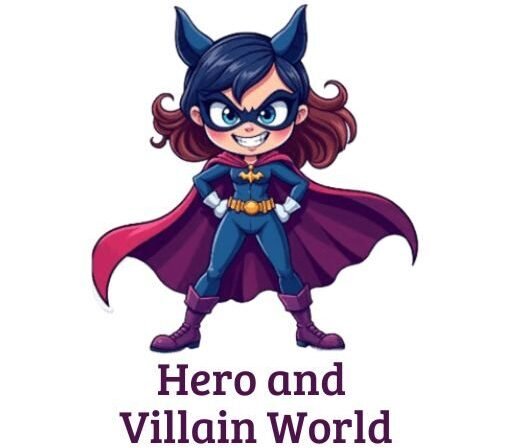


![X-Men: Days Of Future Past [New Printing 2]](https://m.media-amazon.com/images/I/51tymzZ+FJL.jpg)
